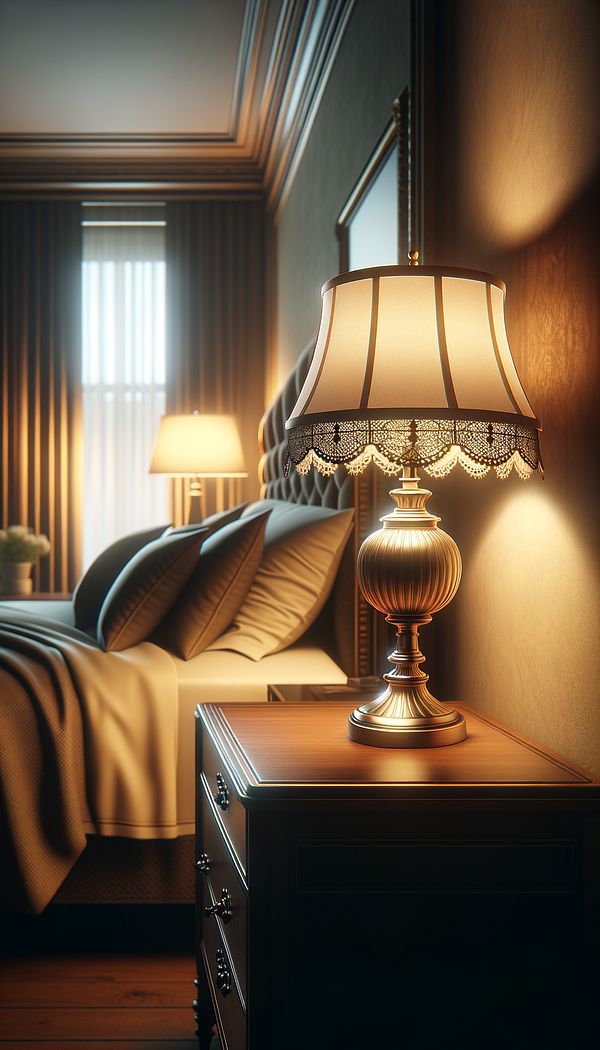What is Lamp?
A lamp is a device that produces light, usually for interior spaces.
Description
In the realm of interior design, a lamp is not just a source of light but a pivotal decorative element that can significantly enhance the aesthetic appeal and functionality of a space. Lamps come in various forms, including table lamps, floor lamps, wall lamps, and pendant lights, each offering a unique contribution to the ambiance and styling of a room. Their designs range from the minimalist and modern to the ornate and vintage, enabling them to complement a vast array of interior design styles.
Lamps can emit different types of light, from warm, soft glows that create a cozy atmosphere to bright, white light ideal for workspaces. The choice of lampshade material, color, and shape further influences the light's quality and direction, making lamps versatile tools in lighting design. Beyond their functionality, lamps serve as statement pieces or subtle accents that reflect personal tastes and design visions. Their positioning within a room is also crucial, affecting both the lighting effects and the room's overall look and feel.
Efficient lamps that utilize LED bulbs or energy-saving technologies contribute to sustainable design by reducing energy consumption. Modern advancements have introduced features such as adjustable brightness levels, color temperature control, and smart integration, allowing for personalized and adaptive lighting solutions.
Usage
A lamp may be used as a focal point in a living room setup, with a striking table lamp placed on a side table next to a sofa. In a study or office space, a functional desk lamp could provide directional light for tasks like reading or writing. A pair of elegant floor lamps could flank a dining area, adding symmetrical visual interest while enhancing the room's lighting.
FAQs
-
Are all lamps electric?
Most lamps in modern interior design are electric, but there are also non-electric types such as oil and candle lamps, which are more commonly used for decorative purposes.
-
Can the design of a lamp affect the mood of a room?
Yes, the design and light quality of a lamp can significantly impact the mood and atmosphere of a room, from creating a relaxed and cozy ambiance with warm lighting to stimulating focus and clarity with bright, white light.
-
What should I consider when choosing a lamp?
Consider the purpose of the lamp (ambient, task, or accent lighting), the style and decor of the room, the size and height of the lamp, and the type of light bulb for efficiency and desired light quality.
-
How do I incorporate lamps into my lighting design?
Balance lamps with other lighting sources, using them to complement overhead lighting for layered lighting effects. Position lamps to highlight design features or areas for specific activities, and select designs that align with the room's aesthetic.
Practical Application
When selecting a lamp, consider both its functional and decorative aspects. Start by determining the purpose of the lamp, whether it's for reading, creating ambient lighting, or accentuating a part of your decor. Match the lamp's style with your room's decor, and consider the size in relation to where it will be placed. Experiment with different placement options to find the best lighting effect, and don't forget to choose energy-efficient bulbs for sustainability.
-
BacksplatA backsplat is the central piece of wood located on the back of a chair, running vertically to connect the seat to the top rail.
-
Drawn To ScaleDrawn to scale refers to the replication of an object or space on paper or software, proportionately adjusting its dimensions to fit a specific size reference.
-
AngoraAngora refers to a type of luxurious, soft wool or fiber obtained from the fur of the Angora rabbit.
-
Blend Different StylesBlending different styles is the process of combining various interior design aesthetics to create a cohesive look.
-
Button TuftedButton tufted refers to a design detail where buttons are sewn through upholstered fabric or leather, creating a dimpled, patterned surface.
